
WALLA WALLA, Wash. — It took 32 hours of travel for Australian winemaker John Duval to reach Walla Walla, but one of the world’s famous Syrah producers could still smile last month during a historical tasting of his Sequel at Long Shadows Vintners.
These are unlikely to ever achieve the buzz of Penfolds Grange, Australia’s most-coveted wine, which Duval made for 16 years. However, it’s important to note Syrah wasn’t planted in Washington state until 1985, and the variety’s oldest vines aren’t found in their native Rhône Valley. But in Duval’s neighborhood, some Syrah has survived since the U.S. Civil War.
“Where I live in the Barossa Valley, we have the oldest Shiraz and Grenache and Mourvèdre vineyards in the world,” Duval said. “We’ve got vineyards that were planted in the 1840s and 1850s that are still producing. And let me tell you, as a winemaker to have assets like these old vineyards — over a 100 years old — is just fantastic.”
Wine Spectator named his 1990 Penfolds Grange as the No. 1 wine in the world for 1995. Eight years later, Long Shadows CEO Allen Shoup and director of winemaking Gilles Nicault had Duval working with perhaps the Columbia Valley’s best source for Syrah — Boushey Vineyard in the Yakima Valley. Dick Boushey’s Syrah vines, first planted in 1993, have been a primary player in Sequel starting with that inaugural 2003 vintage.
“You are talking different soils, different climate. It’s different terroir,” Duval told Great Northwest Wine. “In many respects, the Syrah I’m seeing here is a cross between New World and Old World. Obviously, Washington doesn’t have the age of the vineyards in the Barossa, but there’s expression and character. I’m really impressed by what we’re producing now, and a lot of people are agreeing that Washington may be the best place in North America to grow Syrah.”
We chatted with Duval after the Sept. 12 library tasting in Walla Walla. Here’s our interview:
[powerpress]
A dab of Cab adds to Sequel
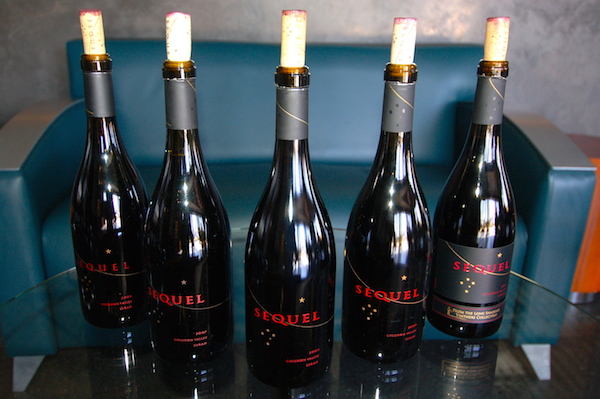
Just as he did with Penfolds Grange, Duval adds a dab of Cabernet Sauvignon to Sequel, which builds structure and boosts the ageability.
“You can see in the wine from the start that if it’s got that intensity of flavor and balance, then you are on a good way for a cellaring style,” Duval said. “And that’s the style that we wanted — the best of both worlds — if people can wait two, three or four years for the wines to settle down and start to drink well.”
There is a different track record with the Penfolds Grange, however, which — like Sequel — sources from a variety of vineyards.
“It’s a wine that keeps improving for 20, 30, 40, 50 years, so they’ve got a history of longevity,” Duval said.
Those are the types of Syrah that some consumers in the United States have learned to appreciate, but in the past few years, the market for Syrah has softened. Part of the cause can be chalked up to the “Yellow Tail Effect.” Cheap, cocktailish Shiraz from Australia flooded these shores and helped create a following for syrupy wines rather than an honest appreciation for the variety.
The Great Recession that began in 2008 also sapped the appeal for many high-end Syrahs. It’s worth noting that Long Shadows produced nearly 2,000 cases from the 2007 vintage. Two years later, the production for the 2009 Sequel was cut nearly in half.
“I think the American consumer is a bit confused about what is Syrah,” Duval said. “In many respects, Syrah reflects terroir more so than Cabernet. All around the world, Cabernet has its own thumbprint. Sure, though can be some variation (with Cabernet), but there’s going to be more variation with Syrah.
“With different soils, a different climate, you are going to expect a different expression from the same variety,” he added.
A distant fascination for The Rocks
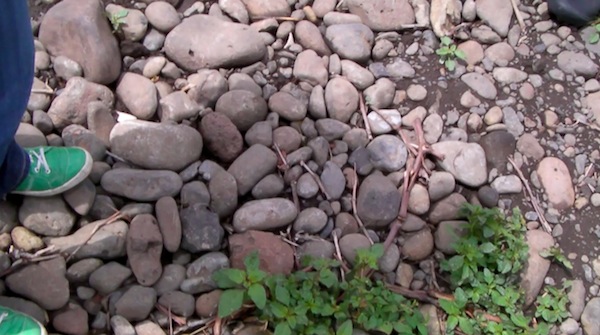
Last spring, the Walla Walla Valley Wine Alliance made Syrah the focus grape for its annual Celebrate Walla Walla, a festival that targets out-of-town aficionados. Duval said he hoped to attend, but a conflict came up. One facet of 2013 Celebrate Walla Walla that particularly appealed to him was the exploration of Syrah produced from the cobblestones in the southern Walla Walla Valley — home to the proposed The Rocks District of Milton-Freewater American Viticultural Area and ground zero for the cult wines produced by Christophe Baron and Cayuse Vineyards. The funk-filled, high pH Syrahs are loaded with smoky, gamy and earthy notes, and they spark conversation.
Shoup said it would be fun to see what Duval would do with fruit from The Rocks, and Duval seems game for the challenge.
“Winemakers are like that. If we hear something is different, then we want to get a piece of the action and try it out — just to check it out ourselves,” Duval said. “If I had the opportunity, yeah, it would be interesting to try, sure.”
At this point, those vines are tied up by wineries who have little reason to release any of their contracted grapes, although they would offer him components he doesn’t typically find back home. Under his Sequel brand, however, there are hints of such characteristics in the 2009 vintage.
“I see a bit more of those savory notes creeping in,” Duval said. “The Washington wines are a little bit more of the smoked meat/charcuterie character coming in and lovely structure, but the Barossa wines — particularly the old vineyards — have a concentration.”
Duval’s recruitment to Long Shadows
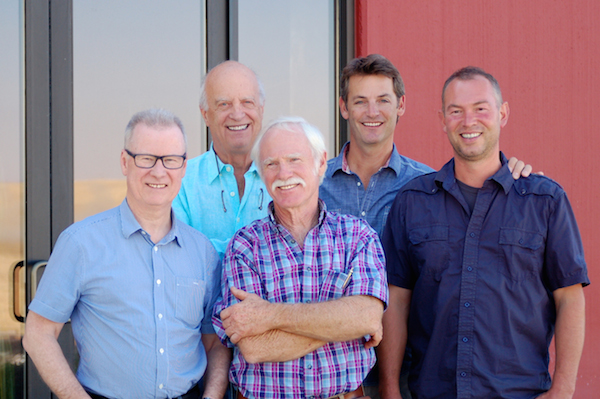
In 2002, Duval decided to leave the only company he’d ever worked for.
 “And I can honestly say that I’ve only been to one job interview in my life, and that was with Penfolds,” he said with a smile. “I was very fortunate to be the custodian of Penfolds Grange for a long time.” (The recently released 2010 Grange retails for $785 per bottle).
“And I can honestly say that I’ve only been to one job interview in my life, and that was with Penfolds,” he said with a smile. “I was very fortunate to be the custodian of Penfolds Grange for a long time.” (The recently released 2010 Grange retails for $785 per bottle).
Soon after, Shoup began recruiting him to join the star-studded team at Long Shadows Vintners.
“His timing was very good, actually, because I had just announced that I was leaving Penfolds after nearly 29 years — 16 years as chief winemaker — to start my family winery,” Duval said. “It was very fortunate that I’d actually been to eastern Washington some time ago, and somewhat fortuitously I had been to the Aspen (Colo.) food and wine event and went to a seminar — ‘What’s Hot and Happening in Washington State.’ I didn’t know everything there was to know about the industry, of course, but I had a bit more up-to-date knowledge about what was happening.”
While each winemaker collaborates frequently with Nicault, the Long Shadows opportunity was different than what Duval first expected.
“Allen’s offer wasn’t just to be a consultant. I was going to be part owner of my part of the project,” Duval said.
He seems to enjoy his association with the other renowned winemakers from across the globe. On this day, he shared a table with acclaimed Napa Valley winemaker Randy Dunn — producer of Columbia Valley Cabernet Sauvignon under the Feather brand. They tasted through each other’s library wines in a room accented by Chihuly artwork. The winery, painted bright red, stands out among rolling fields of the Palouse and offers views of the Blue Mountains.
But one of the unexpected prizes has been the opportunity to share knowledge and responsibility with Nicault, a native of southern France whose infectious smile and charm is only surpassed by the wines he works produces for Shoup.
“He’s a legend,” Duval said with smiled. “He really is. He had a very good job at Woodward Canyon, but he was smart enough to realize the opportunity to gain further experience working with not just one winemaker but a series of international winemakers.
“(Nicault) is a very talented winemaker in his own right, but also a malleable winemaker,” Duval continued. “Working for six or seven masters wouldn’t be an easy thing on paper, but he handles it with great distinction, and he’s an excellent guy to work with. He’s a very likeable guy.”
The relationship with Long Shadows Vintners also affords Duval other channels to market his own 10-year-old brand. After his stay in Walla Walla, he jetted off to Houston, Des Moines, Iowa, and New York to talk about Sequel and John Duval Wines.
“It’s always great to be visiting Gilles and Allen and the team,” Duval said. “I enjoy this part of the world a lot. I come here two or three times a year with Long Shadows and support my importer for my own Barossa Valley project, as well.”
Duval grew up with lamb, Shiraz

It would seem as if Duval was destined to make wine for Australia’s most famous winery. Christopher Rawson Penfold, a physician from England, began in 1844 when he turned cuttings into vines near Adelaide, not far from were Duval grew up.
“For several generations, my family had a farm,” Duval said. “We had Suffolk sheep stud — the black-faced English breed of sheep — and grew Shiraz and Grenache grapes, which we coincidentally sold to Penfolds. It turns out Penfolds liked our Shiraz so much, they took some cuttings from our vineyard to replant some of the original plantings by Dr. Penfold.
“I was very lucky,” he continued. “It was all about timing. From my agricultural background, I did an agricultural science degree at Adelaide University. And then I didn’t want to be a farmer, per se, or work in agricultural research, so there was an opportunity with my agriculture degree to finish off doing winemaking at Roseworthy College.”
In 1974, he graduated and soon got on at Penfolds as an assistant winemaker during the twilight of Max Schubert’s historic career, one that transformed the Australian wine industry by creating Grange. It’s a story reminiscent of Piero Antinori’s then-controversial development of Super Tuscan-style wines in Italy via the addition of Cabernet Sauvignon.
Penfolds also prides itself on its stability at the top. There have only been four chief winemakers in its modern history, and Duval was No. 3. He was mentored by Schubert’s successor — Don Ditter — prior to leading the program from 1986 until he resigned in July 2002. Duval was in such demand that within a year, he was making his own wine in the Barossa Valley, in Walla Walla and in Chile. The wine he creates for Viña Ventisquero is called Pangea.
“I didn’t necessarily want to be a consultant just flying around the world working for other people, but the project in Chile also invited me to be a part of the action,” Duval said. “I’d never been Chile, so when they flew me there, I just fell in love with the country, the people, but most importantly the potential of the project. And it gave me the opportunity to work with a variety that I’d never worked with before — Carménère.”
By the time phylloxera devastated France and the Bordeaux varieties, Carménère had fallen out of favor because of its natural herbaceous character. Duval notes that it doesn’t bring as much tannin to blending trials either.
“When it’s on song, it really sings with a beautiful herbal perfume spice, and we’ve made a Carménère/Syrah blend, which sort of uses the best of both varieties, I guess,” Duval said. “Syrah helps to fill out the palate, and there’s a beautiful mix of the herbal perfume spice and lovely black fruit and blackberry richness.”
GSM, Beijing and Peking Duck
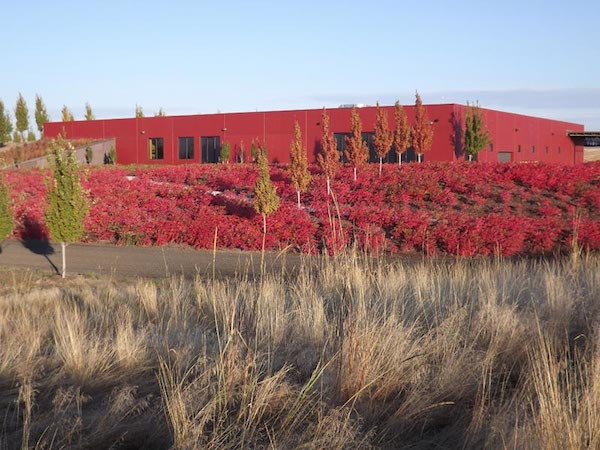
In the Pacific Northwest, thanks in part to the boutique Walla Walla producers, there’s a growing interest in standalone Syrah bottlings.
However, the glut of Syrah grapes on the market during the past decade prompted many throughout the region to begin including significant amounts of the red Rhône grape into Bordeaux blends. That fleshy midpalate that Syrah can build has helped create a growing audience for proprietary red wines. Syrah allows winemakers to form a consistent mouth feel and structure from vintage to vintage, even if characteristics of individual varieties should change.
Now, consumers are comfortable buying and ordering bottles that aren’t standalone varieties. Among them are blends of Rhône varieties, often referred to as GSM — Grenache, Syrah and Mourvèdre.
“When I was chief winemaker at Penfolds, we developed a wine that’s now called Bin 138 — as part of the on-going Penfolds Bin range — which was a GSM blend,” Duval said.
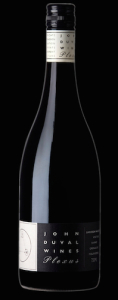 He launched that program in 1992 and took that formula with him to John Duval Wines. In fact, the first release under his eponymous brand was the 2003 Plexus — a GSM-style wine — not a straight Shiraz. The Entity came a year later.
He launched that program in 1992 and took that formula with him to John Duval Wines. In fact, the first release under his eponymous brand was the 2003 Plexus — a GSM-style wine — not a straight Shiraz. The Entity came a year later.
“A lot of people were surprised that the first wine that I released under the John Duval Wines label was a GSM-category wine,” he said. “I actually make a Shiraz-Grenache-Mourvèdre blend because I like the lovely structure backbone that the blackberry Shiraz fruit gives the wine. That’s about 50 percent. Then it’s about 30 percent of Grenache for its lovely aromatics and texture. And the Mourvèdre is normally about 20 percent — or Mataró as we call it in the Barossa Valley. It’s more savory, more earthy and spicy. Those three varieties are just made for each other. They blend together so well.”
In the Northwest, GSM-style wines now are winning top awards in blind competitions because of their vibrant reddish/purple fruit, bright acidity and suave tannins.
“They are such great food wines, right through from pastas, lamb, even white meats, etc.,” Duval said. “I had a remarkable winemaker’s dinner in Beijing when we had Peking Duck. It was a marriage made in heaven with my Plexus Shiraz/Grenache/Mourvèdre.”
Despite all the fine dining, work and travel among three continents, Duval, at age 63, seems fit, trim, relaxed and content.
When asked what he does to unwind, “I drink more wine!” he said with a laugh. “Nah, look, I love wine and food. I love travel, and I’m very fortunate my wife — although she’s a teacher by profession — shares a love of wine, food and travel. So I’m very lucky.”
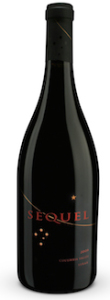 Sequel 2003, Columbia Valley
Sequel 2003, Columbia Valley
From the start, John Duval of Penfolds Grange fame in Australia no doubt trusted Allen Shoup and Gilles Nicault to find prized Syrah fruit, and they didn’t let him down. The blend was Boushey Vineyard (29%), the Long Shadows Vintners estate plantings at then-Wallula Vineyard (26%) and sites on Red Mountain for the rest. The nose produced deep aromas of macerated black cherry, black licorice, blueberry and green olive. The drink, aged in 75 percent French oak, was certainly no syrupy Aussie Shiraz. Instead, it had a silky texture with Marionberry flavors and blueberry acidity. Spectator awarded it 92 points and predicted its downhill slide would begin in 2012. Decanter wrote “Up to 2015,” which seems more accurate, despite the fact that 2003 was considered a hot vintage by those standards. “This reinforces my thoughts about Washington Syrah,” Shoup said. “It loves age. I’d love to have a steak with this.” (700 cases, 14.5% alcohol)
Sequel 2005, Columbia Valley
Washington winemakers raved at the time about how the 2005 vintage may end up as the best of the decade. In this opinion, the ’05 is not holding up as well as the 2003. There’s a fascinating theme of mint, starting in the nose, which picks up cherry jam, cola, black olive, a bit of stewed plum and some briny notes. The drink is an easy one with a lower tannin profile and nice acidity of Marionberry and blueberry, which allows for that mint to carry into the finish. They strayed a bit in terms of sourcing as Alder Ridge and The Benches (then known as Wallula Vineyard) made up 40% percent of the blend, supported by Red Mountain (24%) and to a lesser extent Boushey Vineyard (below 15%). (1,489 cases, 14.7% alcohol)
Sequel 2007, Columbia Valley
There are similarities to 2005 as Alder Ridge, The Benches, Boushey and Red Mountain sites are the base, backed by Cabernet Sauvignon (2%) from Bacchus Vineyard. Again, there’s no syrupy or jamminess to be found as the experience begins with notes of boysenberry, blueberry, mint and Red Vine licorice, followed by juicy Marionberry flavors. It is synched up with fine-grained tannins. It’s worth noting that this vintage marked Duval’s highest production for Long Shadows. “The ’07 is starting to drink nicely,” Duval said. (1,950 cases, 14.7% alcohol)
Sequel 2009, Columbia Valley
In a revert to form, Dick Boushey’s vineyard in the Yakima Valley took the lead (45%) in the blend with old block Bacchus Vineyard (22%) and Red Mountain sites in the background. There’s a faint hint of gaminess in the nose — which doesn’t dominate — as well as boysenberry, red currant, sage, cedar and mint. The entry brings a rush of blueberry jam and Rainier cherry flavors, held up by a high tannin profile and juicy acidity. Black currant and anise are found in the farewell. This was the favorite of the lineup in the eyes of Nicault and fellow Long Shadows winemaker Randy Dunn, who made his name in Napa Valley with food-friendly Cabernet Sauvignon. “I’d put the ‘09 away for a bit longer,” Duval said. (1,107 cases, 14.8% alcohol)
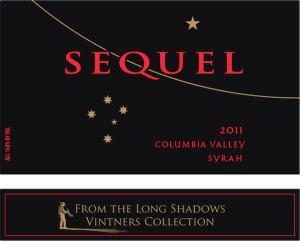 Sequel 2011, Columbia Valley
Sequel 2011, Columbia Valley
Temptation will make this one difficult to keep in the cellar. Last spring, Great Northwest Wine judged this vintage under blind conditions and gave it the top rating of Outstanding!, thanks to the blend of Bacchus (34%), Candy Mountain (33%) and Boushey (28%) vineyards, with Cabernet Sauvignon (5%) from Dionysus Vineyard. In the nose are hints of sizzling ham rubbed with brown sugar, as well as blackberry, plum, black cherry and blueberry backed by a cup of Americano sprinkled with cinnamon. The entry is mouthfilling with black cherry, Marionberry and black currant flavors. Fine-grained bittersweet chocolate tannins and blueberry acidity allow for a finish of graphite and black olive. (1,225 cases, 14.8% alcohol)
Duval’s comments, scores, cellaring tip
“For those people who like a little bit more maturity and complexity in their wine, Sequel as a Syrah offers you that possibility,” Duval summed up. “With good cellaring, the wines will be there 10 years plus.”
In retrospect, it’s remarkable how consistent — some may say predictable — the major wine publications have scored not just the Sequel wines, but also the entire Long Shadows Vintners portfolio.
The Wine Advocate, founded by critic Robert Parker, not once has given the Sequel a score lower than 92 points but never more than the 94 it received for the 2005, 2010 and 2011 vintages. There’s been even more narrow scoring on the pages of Wine Spectator, where only once Sequel has appeared as low as 91 (in 2008). Yet, it’s never gotten above a 93.
As for the highest-scoring wine of all time among Shoup’s star-studded group? That was from the Wine Enthusiast — a 98 for the 2008 Pirouette, a Meritage-style blend.
• In looking back on the half vertical, Duval seemed to best like where the 2009 was heading.
“The potential of the ’09, I think will end up being the longest living in terms of the complexity that’s going to develop,” Duval said. “The ’03 is a lovely, soft drink.”
• One of the takeaways from the vertical tasting was the prevailing belief — albeit self-serving— that those looking to cellar wines such as these seek to buy direct from the winery and at the winery when possible. Collectors could buy with more confidence, and they can also exert total control of the wine’s entire transportation history knowing the wine did not cook in the back of a delivery truck or get lost in an unairconditioned warehouse.

Leave a Reply